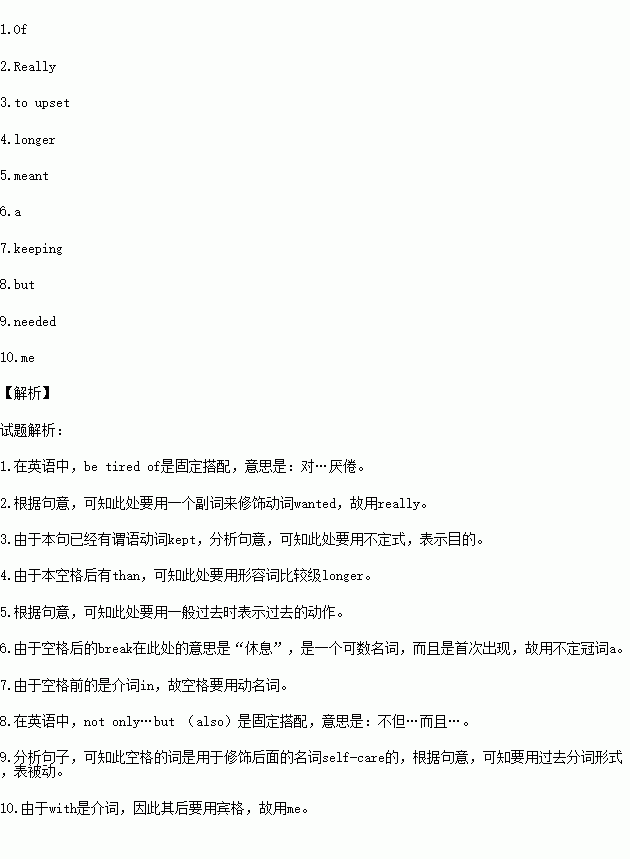题目内容
阅读填空(共1小题)
阅读下面材料,在空白处填入适当的内容(1个单词)或括号内单词的正确形式。
Today I kept a promise and had lunch with a friend I had not seen for a while.I was extremely tired 1. school, work and my 5-hour art lab I had just come from and I 2. (real) wanted to go home after a long day.But I kept my promise not 3. (upset) my friend this evening.
As it turned out, we had such a good time that I stayed 4. (long) than I had planned and saw how much the occasion 5. (mean) to my friend.We usually have been busy with our own daily life, and it felt as if we had never had such 6. long break.
I extremely wanted to go home and hide under the covers today But in 7. (keep) my promise to meet with a friend, I not only was kind to another person, 8. was also kind to myself.
I got some much 9. (need) self-care out of the occasion and was able to make the day of another person meaningful-someone who had just been as busy as me and still kept his promise to have dinner with 10. (I).

